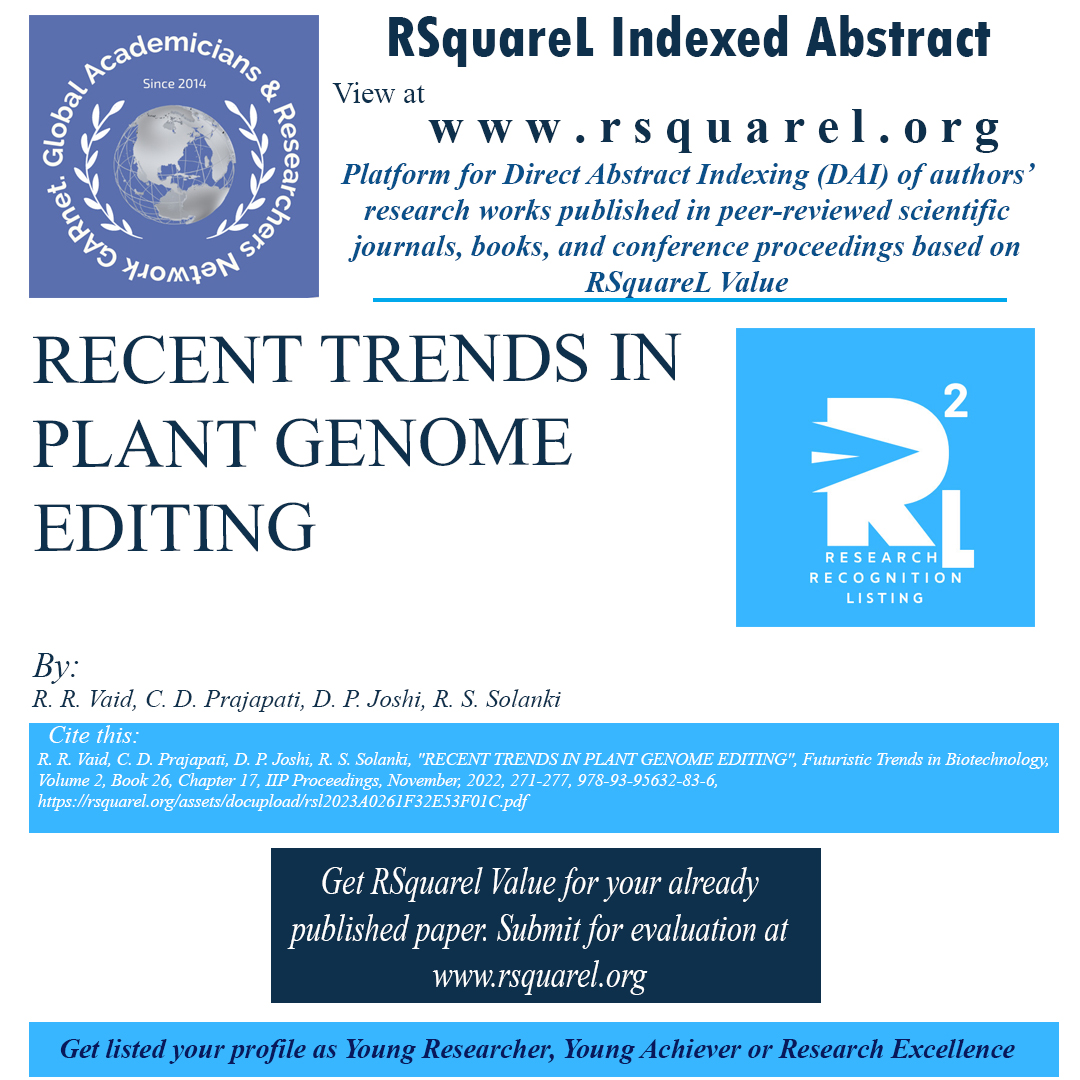editedbook
Publication: IIP Proceedings Year: 2022, Month: November Page No: 271-277, ISSN/ISBN: 978-93-95632-83-6, DOI/Link: https://rsquarel.org/assets/docupload/rsl2023A0261F32E53F01C.pdf
RECENT TRENDS IN PLANT GENOME EDITING
Area/Stream: Biotechnology, Authors: R. R. Vaid, C. D. Prajapati, D. P. Joshi, R. S. Solanki Keywords: Meganuclease, Zinc finger nucleases, TALEN, CRISPR-cas 9 Book Name /series: Futuristic Trends in Biotechnology, Volume 2, Book 26, Chapter 17Publication: IIP Proceedings Year: 2022, Month: November Page No: 271-277, ISSN/ISBN: 978-93-95632-83-6, DOI/Link: https://rsquarel.org/assets/docupload/rsl2023A0261F32E53F01C.pdf
Abstract:
Genomic editing is a potent technology that enables researchers to change the DNA nucleotide sequence at almost any genome of species. Plant research and agriculture have been transformed by advances in genomics and the introduction of numerous genome-editing tools using designed site-specific nucleases (SSNs). Programmable nucleases, such as “meganuclease”, “zinc-finger nucleases”, “transcription activator-like effector nucleases (TALEN)”, and most recently “CRISPR-Cas9” systems, have been used in the development of a variety of technologies. The first programmable nucleases created to target and cleave specific locations were “zinc finger nucleases (ZFNs)”. The CRISPR-Cas9 system, a flexible tool for genome engineering, uses a guide RNA (gRNA) to direct Cas9 to a particular sequence. CRISPR stands for clustered regularly interspaced short palindromic repeats, while Cas9 stands for CRISPRassociated nuclease 9. This straightforward RNA-guided genome-editing technique has developed into a ground-breaking tool. In order to meet the increasing demands of the current global food hunger and to implement a workable and environmentally safe agriculture programme that is greater specifically, productive, economical, and eco friendly, genome editing technology is consistently used to increase average yield. These novel techniques, which are succinctly covered here, have shown to be effective and trustworthy tools for plant genetic modification.
Cite this: R. R. Vaid, C. D. Prajapati, D. P. Joshi, R. S. Solanki,"RECENT TRENDS IN PLANT GENOME EDITING", Futuristic Trends in Biotechnology, Volume 2, Book 26, Chapter 17, November, 2022, 271-277, 978-93-95632-83-6, https://rsquarel.org/assets/docupload/rsl2023A0261F32E53F01C.pdf
Views: 4187
Download File
News
